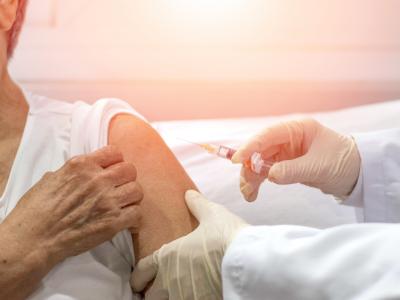Drug-resistant leprosy reported in West Africa
An international team of researchers is reporting transmission of antibiotic-resistant leprosy in Guinea.
Using molecular methods, the team tested skin biopsy samples from 24 patients—one relapse case and 23 new cases—collected in the country from 2012 to 2015. Whole-genome sequencing revealed mutations in four of the samples. In one of them the researchers found a mutation previously associated with high-level rifampicin-resistant leprosy. In the three other samples, they found a mutation associated with dapsone-resistant leprosy that has not been identified anywhere else. All four drug-resistant cases occurred by transmission.
The authors say this is the first time that cases of primary rifampicin- and dapsone-resistant leprosy have been identified in West Africa, and that's a concern because rifampicin and dapsone are two of the first-line drugs used in multidrug treatment of leprosy. While dapsone-resistant strains have been around since the 1970s (and prompted the introduction of multidrug therapy), the authors warn that the emergence of these strains could have a serious effect on leprosy control programs, because of the lack of effective alternative drugs.
An accompanying commentary says the findings indicate the need to increase monitoring for antibiotic-resistant leprosy in countries with low, middle, and high levels of the disease. Guinea, which reported 313 cases of leprosy in 2014, has a moderate leprosy burden.
The study was published Aug 23 in Clinical Infectious Diseases.
Aug 23 Clin Infect Dis abstract
Aug 23 Clin Infect Dis commentary (subscription or fee required)
Seven more fairgoers ill with variant H3N2
Four people who visited Michigan fairs have become infected with variant influenza A/H3N2 (H3N2v), and three additional illnesses were reported in Ohio fairgoers, according to today's FluView report from the Centers for Disease Control and Prevention (CDC).
Michigan and Ohio reported the infections during the week ending Aug 20. All 7 patients had contact with swine in fair settings during the week prior to becoming ill, the CDC said.
A total of 18 H3N2v infections, 12 in Michigan and 6 in Ohio, have now been reported in 2016, all during August and all associated with exposure to swine exhibited at fairs, the CDC said. One person was hospitalized and released, and no deaths have occurred.
Humans can become infected with swine-origin flu like the H3N2v strain when pigs sneeze and release droplets of virus that land in a person's eyes or mouth. Most cases of H3N2v in humans are mild.
CDC recommendations for interacting safely with swine include washing hands before and after entering a swine barn, refraining from eating or drinking around swine, and avoiding pigs altogether if at risk for flu-related complications.
Aug 26 CDC FluView report
Aug 19 CIDRAP News item on 8 human H3N2v cases in Michigan
Aug 15 CIDRAP News item on H3N2v in pigs at Michigan county fairs
CDC information on swine influenza/variant influenza virus
Chinese woman recovers from H9N2 infection
A 29-year-old woman in China’s Guangdong province was hospitalized with an H9N2 avian influenza infection and has since recovered, according to a translated report posted today by FluTrackers, an infectious disease message board.
China’s Ministry of Health and Family Planning Commission said yesterday that the woman, who is from Zhongshan in Guangdong’s Pearl River delta region, recovered during her hospitalization in Guangzhou.
The World Health Organization (WHO) said in May that the global count of confirmed human H9N2 cases was 28, with no deaths and no cases of person-to-person transmission. Since that time, two additional human infections have been reported, both of which occurred in Guangdong province.
Aug 26 FluTrackers post
May 19 WHO report
Jun 20 CIDRAP News item on recent human H9N2 case
Togo reports H5N1 outbreaks on two southern farms
Togolese agricultural officials detected highly pathogenic avian influenza H5N1 on two farms in the country’s Region Maritime near the Gulf of Guinea, according to a report yesterday to the World Organization for Animal Health (OIE).
The first outbreak began on Aug 18 in the town of Adetikope. Of 13,392 susceptible birds, 10,350 became ill and died, and 3,000 birds were culled to stop the virus's spread. The second outbreak, which began Aug 19, killed 950 birds out of a flock of 980 in the town of Adidogome, and the remaining 30 birds were destroyed.
Both outbreaks occurred on "semi-modern farm(s) without biosecurity measures," the OIE said, noting that Togo had not reported an H5N1 outbreak since January 2009.
Togo reported its first H5N1 outbreak in poultry in 2007. A search of CIDRAP News files indicates that the two new outbreaks are the first ones reported there since 2008.
Aug 25 OIE report













